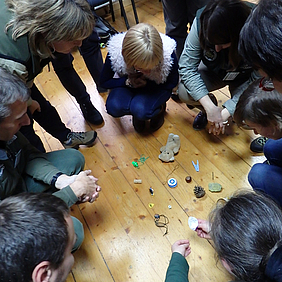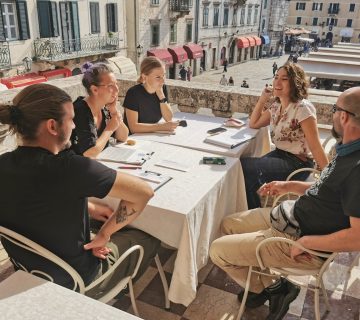There are 23 national parks in Poland, however, they all cover no more than 1% of the total area of the country. Each park protects the nature, but until now heritage interpretation hasn’t been used to achieve this goal
National parks are the highest form of nature protection in Poland. Each park has its own group of employees who care about the realisation of statutory goals. Their main roles are nature protection, education, and tourism management. Each of these fields has its own issues to deal with, but among them, educational activity seems to be the most ambitious and appealing part with great importance for the future.
Over the years, we have developed skills that allow us to lead educational programs. We have been doing this successfully for years. But – what needs to be said – most of these programmes are aimed at children. We realised that there was still a gap when it came to the adult audience and that’s why we have been working on ‘reaching’ this group. It is not an easy task, but we are aware that only in this way we can achieve our objectives – mindful protection of the environment by responsible society.
Could heritage interpretation be the answer? Two of us – educators from Polish national parks – attended a CIGT course in the Czech Republic in August 2016. We were looking for more ideas on how to encourage people to appreciate nature and this approach seemed to be the right opportunity to try. The next step was to ‘replant’ the ideas in our ground. This wasn’t easy, but the first steps have been taken! A drop of water will eventually hollow out the rock! And the first drops fell when, in October 2016, we ran a two-day workshop for educators from five national parks situated in Lesser Poland. Twenty participants met in Ojcow National Park to get to know something about HI. Two of these educators from Tatra National Park had recently attended the course of interpretation in the USA, so we were able to share our experiences.
As the ideas behind Heritage Interpretation weren’t well known among the educators, our main goal, as trainers, was to make HI become alive in their minds. We managed to introduce the subject and present its value and utility for our work. The question we discussed the most was whether interpretation was the other way of education. Answering this question was more difficult than we expected. Can interpretation replace education or can they support each other? These questions were really important, so we invited participants to search for the answers in their first-hand experience. And yes, we made some interpretation of the interpretation for them, just to provoke the resonance, not to give the strict solutions. And it worked perfectly! After two days we were full of questions but also we were encouraged to get to know HI better. What we liked most was that we refreshed our thinking about protected areas as natural heritage. The training encouraged us to treat out work as a mission and a very responsible one. In national parks, we must foster respect for our heritage and the discovery of another method for supporting this makes our job more and more valuable.
Magdalena Ku’ is a member of IE’s training team. She works as the Head of Education Department in Magura National Park, Poland. You can get in touch with her at: kus.magdalena@wp.pl
Alicja Fischer is a member of IE’s training team. She works as a main educational specialist in the Department of Science and Education, Ojcow National Park, Poland. You can get in touch with her at: alicja.fischer.epost@gmail.com
To cite this article:
Magdalena Ku’, Alicja Fischer (2017) ‘Introducing HI to educators in Polish national parks’. In Interpret Europe Newsletter 1-2017, 16
Available online:
https://www.interpret-europe.net/fileadmin/Documents/publications/Newsletters/ie-newsletter_2017-1_spring.pdf




